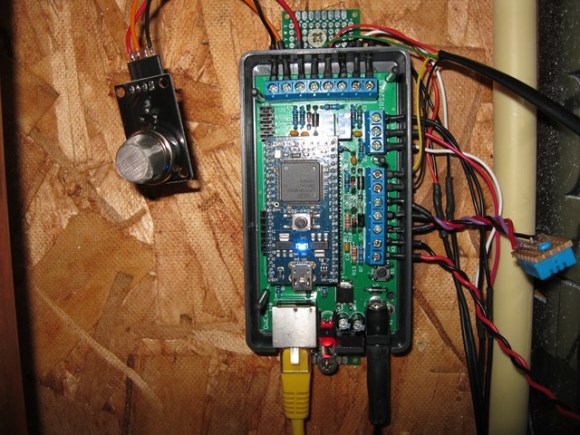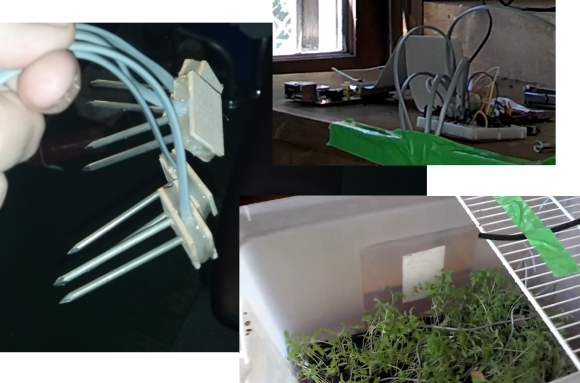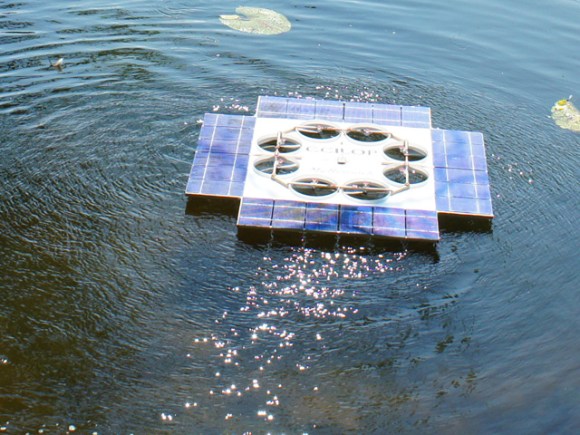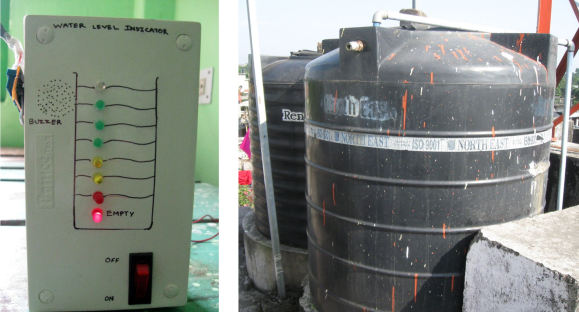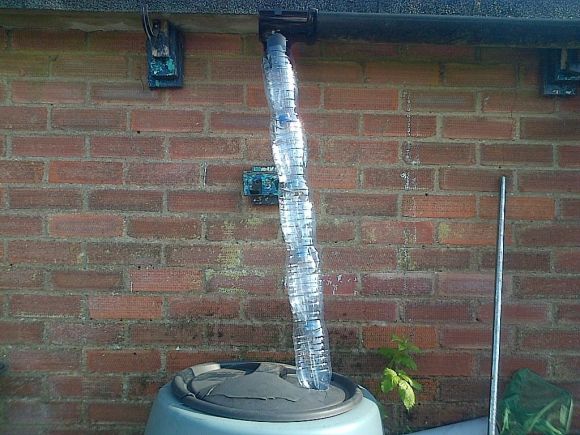
This is [Wombling’s] no-cost solution to getting rain from his gutters into a rain barrel. It is literally just a bunch of plastic water bottles chained together. At one end he uses the original cap with some holes punched in it as a sieve.
We like the concept, but find the execution a bit dubious. In heavy rain the holes in the cap will not be able to keep up and we figure your gutters are going to overflow. That may be okay depending on the grade of your landscaping, but those who value keeping their basement dry should avoid this route.
Just a bit of improvement could change all that though. We suggest making the rain barrel the sieve. Add a bowl shape to the lid with a large piece of screen in the bottom to filter out debris. Then form some type of spout on the front side of the lid to channel overflow away from the house.
The amount of waste generated by bottled water has always troubled us, which is part of the reason we featured this. We also liked seeing those plastic bottle skylights, and could swear we featured a floating plastic bottle island built in the ocean but couldn’t find the link. If you know what we’re talking about leave the goods in the comments section.

